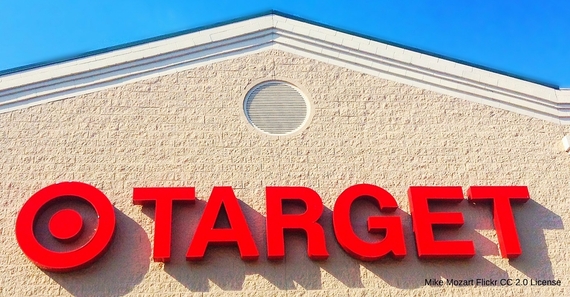During the Grammys this week, the retail giant Target pulled out all the stops with its live music video starring the singing, acting, and dancing Gwen Stefani.
To great fanfare, last year the retailer had partnered with Imagine Dragons, who performed during the awards show atop a circular stage painted with a signature red bull's-eye. With this year's four-minute commercial extravaganza, Target reportedly wanted to 'one-up itself.'
By most objective measures, it did, with multiple set and costume changes, exposure through three different social media platforms, even a surprise roller-skating accident by a Stefani stunt-double that caused a mild freak-out in the internet.
Generating increasing levels of buzz at the Grammys has become something of a tradition for the trendy retailer, but there's no reason for the company to confine itself there. We at Environment America think Target can "one-up itself" in another way: rooftop solar power.
Last year the Minneapolis-based retailer pledged to put rooftop solar on a quarter of its stores. Good! But even better would be a commitment to put solar panels wherever viable on its nearly 2,000 stores in North America.
What makes rooftop solar so important? Since they are flat and almost always fully exposed to the sun, the rooftops of Target and other superstores are basically perfect for solar panels.
When we analyzed the nation's 96,000 big box stores, grocery chains, and shopping centers for a new report out this week, we found 4 billion square feet of roof space that could be put to good use generating clean energy.
With the second most retail stores in North America, Target's share of all that roof space is equivalent to 4,000 football fields.
Walmart has the most retail rooftop space; it has also installed the most solar energy. According to the latest data available summarized in our report, Walmart is followed by Costco, Kohl's, and IKEA.
With so much rooftop potential, and with such famously high standards for itself, Target shouldn't settle for less when it comes to solar energy. After all, its ads tell us we should "expect more."
With solar on all of its viable rooftops by 2030, Target could create enough energy to power close to a quarter-million homes and avert tons of carbon pollution.
Target isn't alone, of course. Solar on all major big box stores across the country could make a big dent in climate pollution, reduce energy waste, and save money.
Using existing roof space on all of the nation's big retail chain stores and shopping centers could nearly triple U.S. solar capacity, reducing climate-warming carbon pollution by 57 million metric tons annually - the same produced in a year by 12 million vehicles.
Producing electricity on rooftops, close to where the electricity will be used, also reduces losses that happen during electricity transmission - losses which totaled 5 percent of electricity sales in 2012.
Rooftop solar is also good for business. Electricity produced by rooftop panels on all the big box stores and shopping centers analyzed in today's report could offset enough electricity to save these businesses $8.2 billion annually on their electricity bills.
Solar on superstores is good for the environment, good for electricity customers, and good for business. To get there, we need forward thinking policies like net metering, third-party financing, and community solar. And we need as many big box stores as possible pledging to do their part. Join us in calling on Target to make a bold commitment to solar power - one as groundbreaking as the live music video it sponsored Monday night.

